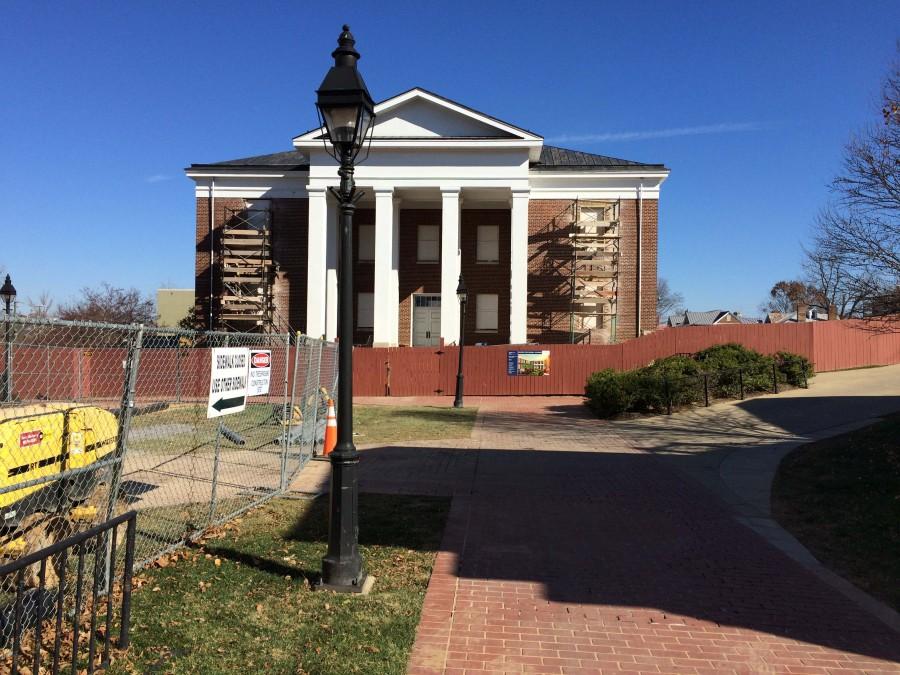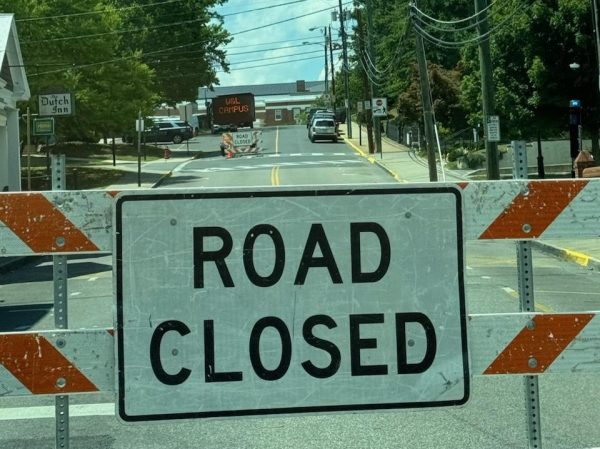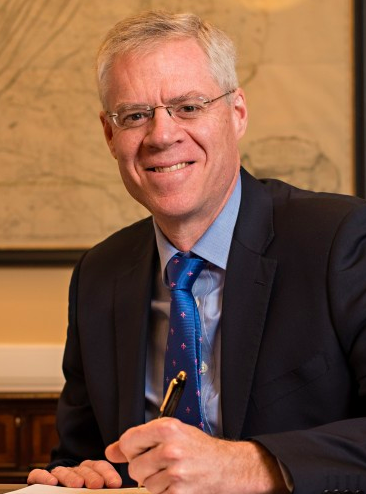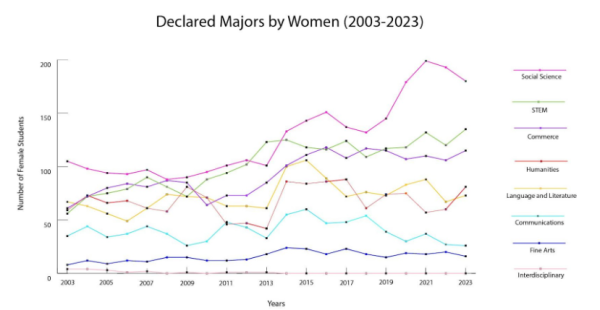Campus braces for blastings
Rock must be cleared to make way for Center for Global Learning
November 16, 2014
Most college students never have to worry about explosions on campus. But when Washington and Lee students scrolled through their university email inboxes last week, they found a message titled, “Blasting Activities at Center for Global Learning Site.”
Scheduled to open Winter 2016, the new Center for Global Learning will consist of a renovated duPont Hall, along with a 17,700 square foot additional building next to the science center. The center will comprise of classrooms and labs, as well as a garden, courtyard, and tea shop.
In order for this vision to be realized, a massive construction effort at the site is currently underway, and blastings will occur over the next six weeks.
“Through blasting, we’re removing rock from the construction site and leveling the foundation for the addition to duPont Hall to make it the Center for Global Learning,” said Project Manager Carole Bailey.
However, these blastings will not be like the explosions seen on the big screen.
“The process is very scientific and controlled. Holes are drilled in the rock, explosives are inserted in them, and when the blasts occur, the rock breaks a certain way depending on what pattern the holes are in. Huge mats made of tires and weighing a couple thousand pounds are placed on top of the rock to muffle and control the blasts,” Bailey said.
The email sent to students detailed the warning signals for the blasting, which include a long horn siren one minute prior to the explosion, but it seems that students will have little to worry about.
“Since the blasts are underground, the land looks almost the same after the explosions as it did before,” Bailey said. “The concept of blasting seems very exciting, but in actuality, it’s boring. It’s an ‘uneventful event.’”
Though the explosions will not occur on the surface, precautions have still been taken to make sure the surrounding buildings are not harmed in any way.
“The blasts are designed to register less than “1” on the Richter scale. People will hear them, but they’ll be mild enough to protect historic structures in Lexington,” Bailey said.
The Richter scale is the metric used to measure the energy released after an earthquake or other seismic event. The less energy released, the lower the number on the scale.
Students do not seem to be too worried about the blastings.
Karishma Patel ’18, said: “Blasting is new to me, but I’m not concerned about it at all. I trust that the people in charge of construction know what they’re doing. Honestly, I’m just excited for the opening of the Center for Global Learning. I hear it’s going to be great.”













